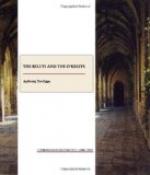It was once the property of the O’Kellys; but, in those times the landed proprietors thought but little of the towns; and now it is parcelled out among different owners, some of whom would think it folly to throw away a penny on the place, and others of whom have not a penny to throw away. It consists of a big street, two little streets, and a few very little lanes. There is a Court-house, where the barrister sits twice a year; a Barrack, once inhabited by soldiers, but now given up to the police; a large slated chapel, not quite finished; a few shops for soft goods; half a dozen shebeen-houses [11], ruined by Father Mathew; a score of dirty cabins offering “lodging and enthertainment”, as announced on the window-shutters; Mrs. Kelly’s inn and grocery-shop; and, last though not least, Simeon Lynch’s new, staring house, built just at the edge of the town, on the road to Roscommon, which is dignified with the name of Dunmore House. The people of most influence in the village were Mrs. Kelly of the inn, and her two sworn friends, the parish priest and his curate. The former, Father Geoghegan, lived about three miles out of Dunmore, near Toneroe; and his curate, Father Pat Connel, inhabited one of the small houses in the place, very little better in appearance than those which offered accommodation to travellers and trampers.
[Footnote 11: shebeen-houses—unlicensed
drinking houses, where
un-taxed ("moonshine”) liquor
was often served]
Such was, and is, the town of Dunmore in the county of Galway; and I must beg the reader to presume himself to be present there with me on the morning on which the two young Kellys went to hear Sheil’s speech. At about ten o’clock, the widow Kelly and her daughters were busy in the shop, which occupied the most important part of the ground-floor of the inn. It was a long, scrambling, ugly-looking house. Next to the shop, and opening out of it, was a large drinking-room, furnished with narrow benches and rickety tables; and here the more humble of Mrs. Kelly’s guests regaled themselves. On the other side of this, was the hall, or passage of the house; and, next to that again, a large, dingy, dark kitchen, over which Sally reigned with her teapot dynasty, and in which were always congregated a parcel of ragged old men, boys, and noisy women, pretending to be busy, but usually doing but little good, and attracted by the warmth of the big fire, and the hopes of some scraps of food and drink.
“For the widow Kelly—God bless her! was a thrue Christhian, and didn’t begrudge the poor—more power to her—like some upstarts who might live to be in want yet, glory be to the Almighty!”




